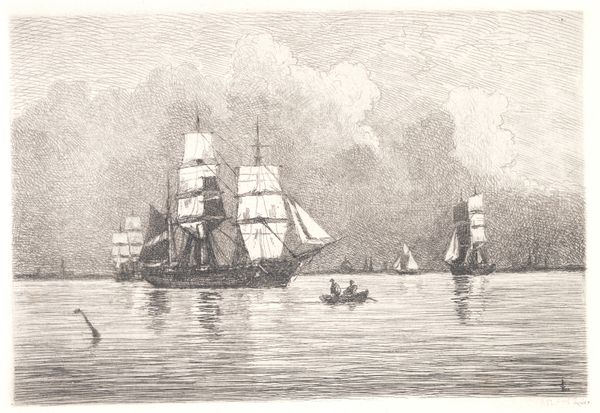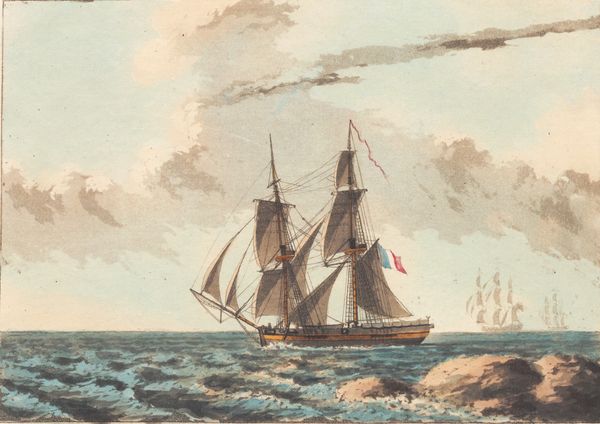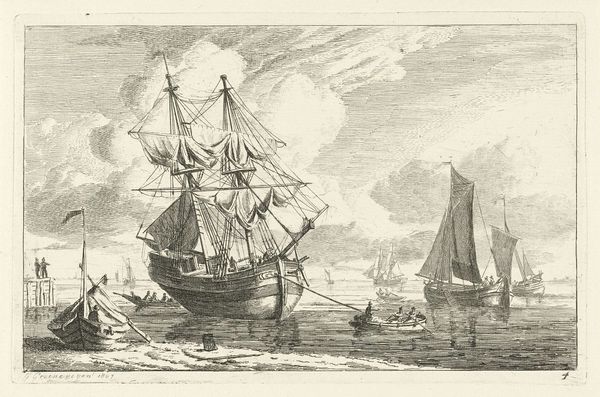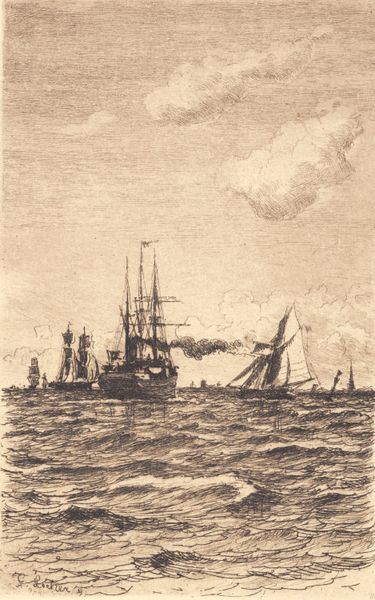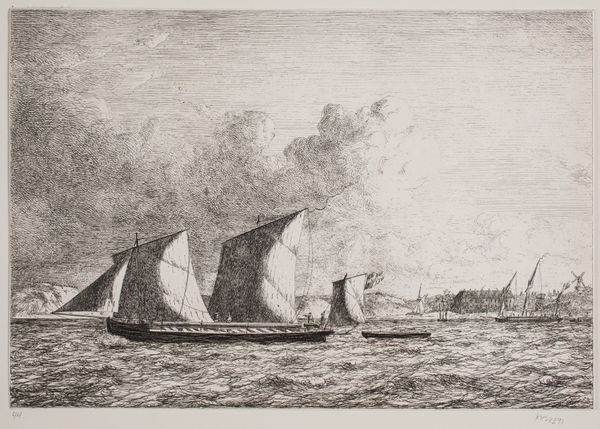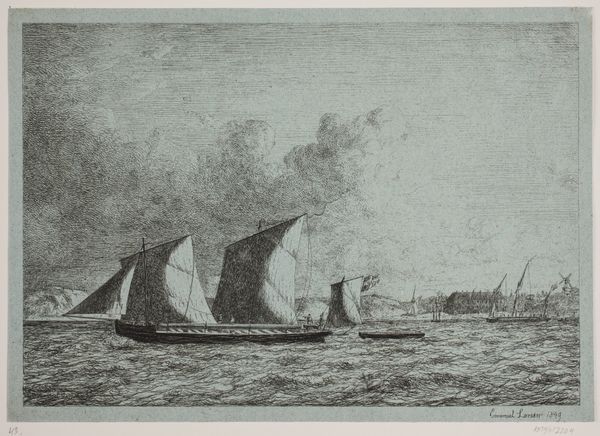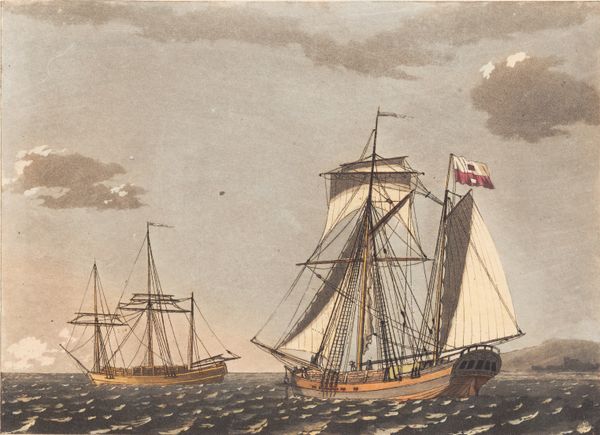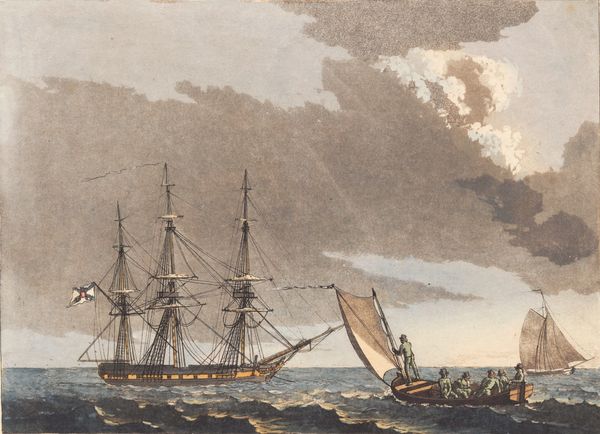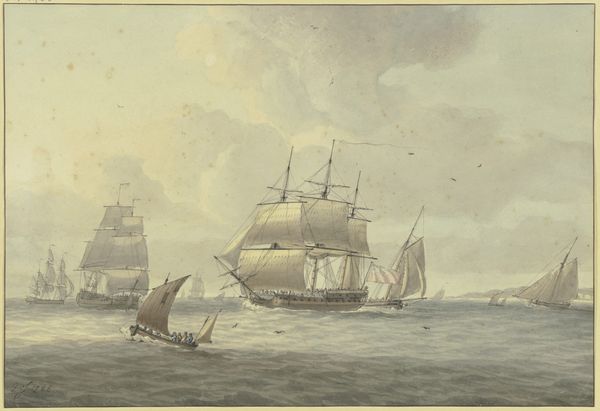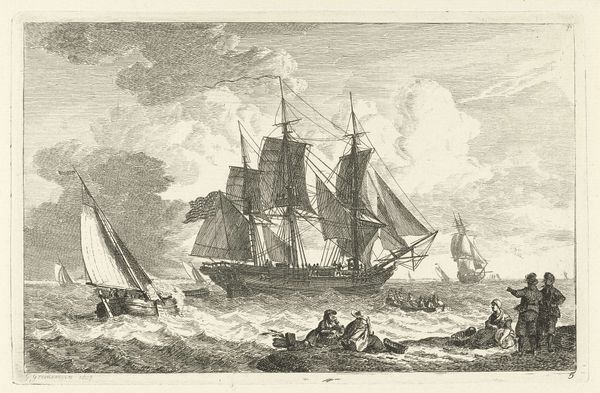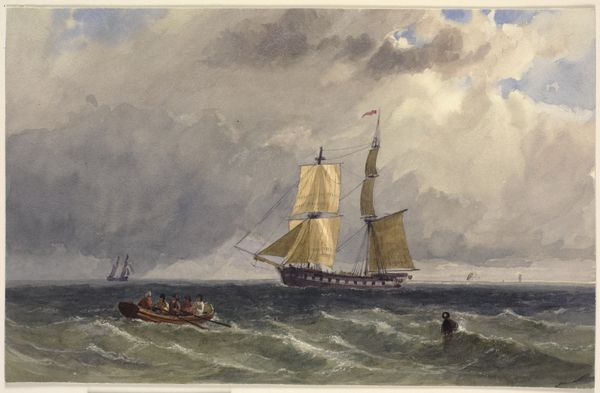
drawing, print, etching
#
drawing
# print
#
etching
#
landscape
#
pencil drawing
#
cityscape
Dimensions: 169 mm (height) x 238 mm (width) (plademaal), 145 mm (height) x 217 mm (width) (billedmaal)
Curator: Before us is "I sundet ved Kronborg," or "In the Sound by Kronborg," created between 1902 and 1905 by Carl Locher. It's currently housed here at the SMK, Statens Museum for Kunst. What's your first impression? Editor: It feels like a whisper, a ghostly echo. The tones are so muted, almost monochromatic, drawing you into this quiet seascape. Is that Kronborg Castle in the distance? Curator: Exactly. The etching captures the majestic castle viewed across the Øresund Strait. What’s fascinating is Locher’s choice of etching. Think about it—each line, each dot meticulously placed to conjure the vastness of the sea. He was likely thinking about the intense labor, craft, and chemicals required for this work. Editor: It does emphasize the deliberate and somewhat laborious act of creation. I'm struck by the depiction of the water. It’s not romanticized. You see the movement, the chop, maybe even feel the cold spray. Those ships add to a feeling of...industry? It’s a working ocean. Curator: Precisely. He doesn’t shy away from portraying the realities of maritime life. Look at the tiny rowboat in the foreground; the smallness of human endeavor against the immensity of nature. There’s an interesting tension between the detailed rendering of the ships and the almost abstract depiction of the sky. He’s showing us the sea as a space of labor and movement. Editor: Absolutely, this isn't Turner's dramatic, sublime ocean, but something grittier and more real. Consider the economic weight these vessels would have carried, these watercraft of work and trade, moving and grinding against each other in constant transaction. One could see the artist challenging boundaries between craftsmanship and art through the act of detailing each ship. Curator: It makes you think about the human cost of it all, right? The sailors, the shipbuilders, the trade routes, the very real exchange of objects happening just off the canvas. And that Kronborg castle as this imposing structure looming above, historically extracting sounds dues on all goods being carried. It really ties art to social context and tangible labor! Editor: Agreed! It also highlights how artistic mediums like etching became powerful ways to engage with depicting the industry of water trade through repetitive action, reflecting production practices to audiences that purchased such images as signs of national pride or reminders of economic gain. Curator: I appreciate your view. Ultimately, this work captures a world in motion, a fleeting moment caught in time and ink.
Comments
No comments
Be the first to comment and join the conversation on the ultimate creative platform.
